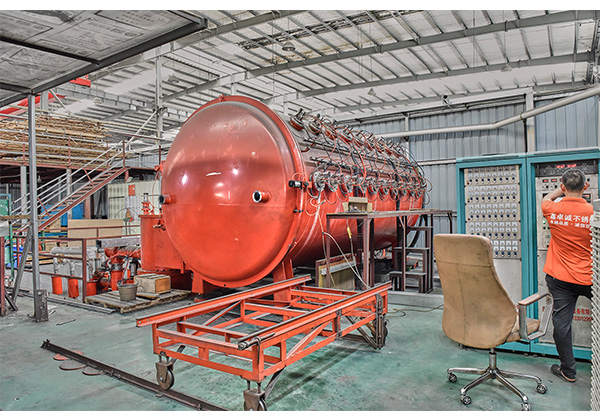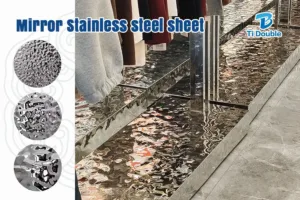Introduction
Physical Vapor Deposition (PVD) coatings represent a revolutionary advancement in materials science and engineering, providing both functional and aesthetic benefits. When applied to stainless steel, PVD coatings stainless steel can dramatically enhance its durability, appearance, and versatility.




This guide explains PVD coatings. It covers their uses and advantages. It also discusses how they improve stainless steel. The guide includes both technology and practical information.
Understanding PVD Coatings
1. What is PVD Coating?
Physical Vapor Deposition (PVD) is a coating method that works in a vacuum. It puts thin layers of material on a surface. The process generally follows these steps:
- Vaporization: A solid material (often a metal or compound) is heated in a vacuum chamber until it evaporates. This heating is achieved through methods like sputtering or evaporation.
- Transport: The vaporized material travels through the vacuum chamber.
- Deposition: The vapor condenses on the substrate surface, forming a thin, solid film.
Surface Enhancement Technology are renowned for their durability and aesthetic appeal, making them a popular choice for various applications.
2. Types of PVD Coatings
Several types of PVD coatings are used depending on the desired properties and aesthetics:
- Titanium Nitride (TiN): This is one of the most common PVD coatings, offering a gold-like finish. TiN coatings are highly resistant to wear and corrosion.
- Titanium Carbide (TiC) is very hard. TiC coatings have a dark grey or black finish. People use them in areas that need strong abrasion resistance.
- Zirconium Nitride (ZrN) has a gold color like TiN but differs in wear and corrosion properties.
- Chromium Nitride (CrN): Provides a shiny, silvery finish while enhancing the substrate’s resistance to wear and corrosion.
3. The PVD Color Stainless Steel Process
The PVD coating process involves several key stages:
- Preparation: The substrate (e.g., stainless steel) is thoroughly cleaned and prepared to ensure good adhesion of the coating.
- Heating and Vaporization: The process heats the coating material in the vacuum chamber to create vapor.
- Deposition: The vaporized material condenses onto the substrate, forming a thin, uniform coating.
- Cooling and Post-Processing: The team cools the coated substrate and performs any post-processing steps, such as polishing.


Benefits of PVD Coatings
1. Durability and Hardness
PVD coatings are extremely hard, making them highly resistant to scratching, abrasion, and general wear and tear. This hardness extends the lifespan of coated products, making them ideal for high-traffic and high-use environments.
2. Corrosion and Wear Resistance
The coatings provide excellent resistance to corrosion and staining. This is particularly beneficial for stainless steel components exposed to harsh environments or chemicals.
3. Aesthetic Enhancement
PVD coatings can achieve a wide range of colors and finishes. PVD coatings are stronger and more colorful than traditional coatings. They bond with the material, which helps prevent peeling and fading over time.
4. Environmental Considerations
PVD is a cleaner process compared to traditional coating methods that use toxic chemicals. It does not require hazardous substances or produce harmful waste, making it more environmentally friendly.
Applications of PVD Coatings on Stainless Steel


1. Architectural Applications
PVD-coated stainless steel is widely used in architectural design. The coatings enhance both the aesthetic and functional aspects of building materials:
- Facades: Coated stainless steel can be used for building facades, offering a sleek, modern look while improving durability.
- Interior Design: Applications include decorative panels, handrails, and fixtures, where both visual appeal and wear resistance are important.
- Elevator Interiors: PVD coatings add a high-quality finish to elevator interiors, combining aesthetics with functionality.
2. Jewelry and Watches
PVD coatings are popular in the fashion industry, particularly for jewelry and watches. They provide a range of colors and finishes, from gold and rose gold to black and bronze:
- Jewelry: The coatings add color and durability to rings, necklaces, and other pieces, enhancing their appearance and longevity.
- Watches: PVD coatings can give watches a luxurious look while protecting them from scratches and corrosion.
3. Automotive Industry
In the automotive sector, PVD-coated stainless steel is used for various components:
- Trim and Accents: Coatings add a stylish appearance to car trim and accents while offering resistance to environmental damage.
- Manufacturers can use PVD coatings on wheels. This makes them look better and helps them resist brake dust and dirt from the road.
4. Tools and Machinery
PVD coatings extend the life of tools and machinery by enhancing their hardness and wear resistance:
- Cutting Tools: Coatings improve the performance and lifespan of drills, mills, and other cutting tools.
- Machinery Components: Components such as bearings, gears, and shafts benefit from increased durability and reduced friction.
How PVD Coatings Transform Stainless Steel
1. Colorization and Aesthetics
PVD coatings provide a versatile range of colors and finishes that can be customized to meet design requirements. This color is not just on the surface. It is mixed into the coating. This gives a brighter and longer-lasting finish than old methods.
- Gold and Rose Gold achieve their luxurious appearance through TiN or ZrN coatings.
- Black and Grey: TiC coatings offer a sleek, modern look with high abrasion resistance.
- Various PVD processes can achieve these hues of bronze and copper, adding warmth and richness to the stainless steel.
2. Enhanced Durability
Stainless steel coated with PVD exhibits significantly improved hardness and resistance to wear and corrosion. This makes it suitable for environments where traditional coatings might fail:
- Wear Resistance: PVD coatings withstand high levels of friction and abrasion, reducing the frequency of maintenance or replacement.
- Corrosion Resistance: The coatings protect the underlying stainless steel from corrosive substances, extending its service life.
3. Integration with Design Trends
PVD coatings align with current design trends that emphasize both aesthetics and functionality. The ability to make many colors and finishes helps designers create unique styles that are also durable.
Maintenance of PVD Coated Stainless Steel
1. Cleaning and Care
Maintaining the appearance of PVD-coated stainless steel involves simple cleaning practices:
- Use Non-Abrasive Cleaners: Harsh chemicals and abrasive cleaners can damage the coating. Mild soap and water, along with a soft cloth, are usually sufficient.
- Avoid Scratches: Although PVD coatings resist scratches, abrasive materials can still damage them. Using soft, non-abrasive cloths and avoiding contact with hard surfaces can help maintain the finish.
2. Long-Term Durability
While PVD coatings are highly durable, they are not entirely impervious to damage. Regular maintenance and care can help preserve their appearance and performance over time.
Conclusion
PVD coatings represent a significant advancement in material technology, offering both functional and aesthetic benefits. PVD coatings make stainless steel stronger. They help it resist wear and rust.
These coatings also come in many colors and finishes. From architectural applications to jewelry and automotive components, PVD-coated stainless steel offers versatile solutions that meet modern design and performance requirements.
Understanding the PVD coating process helps industries and designers use this technology effectively. This leads to the creation of products that are both attractive and long-lasting.



